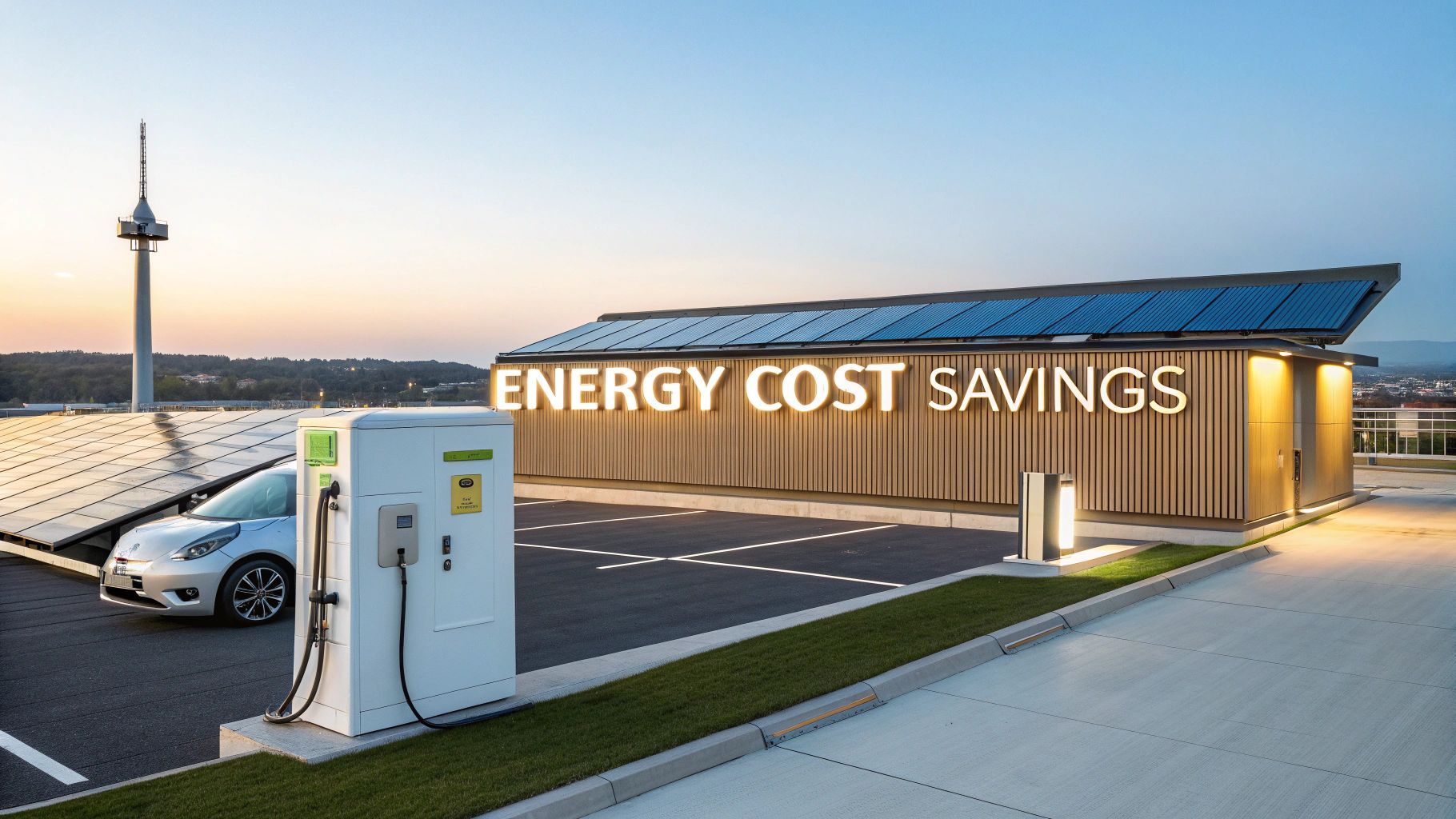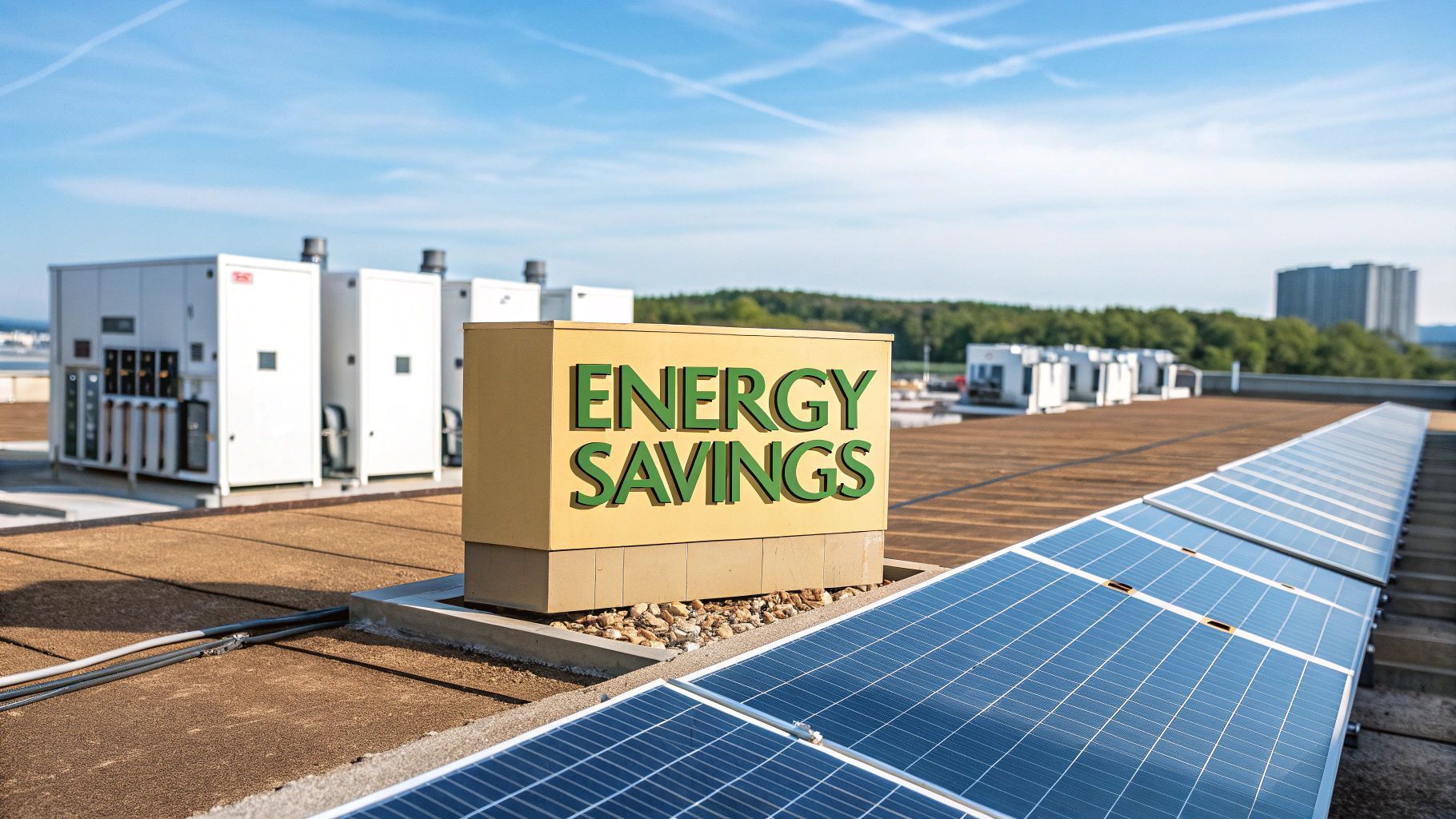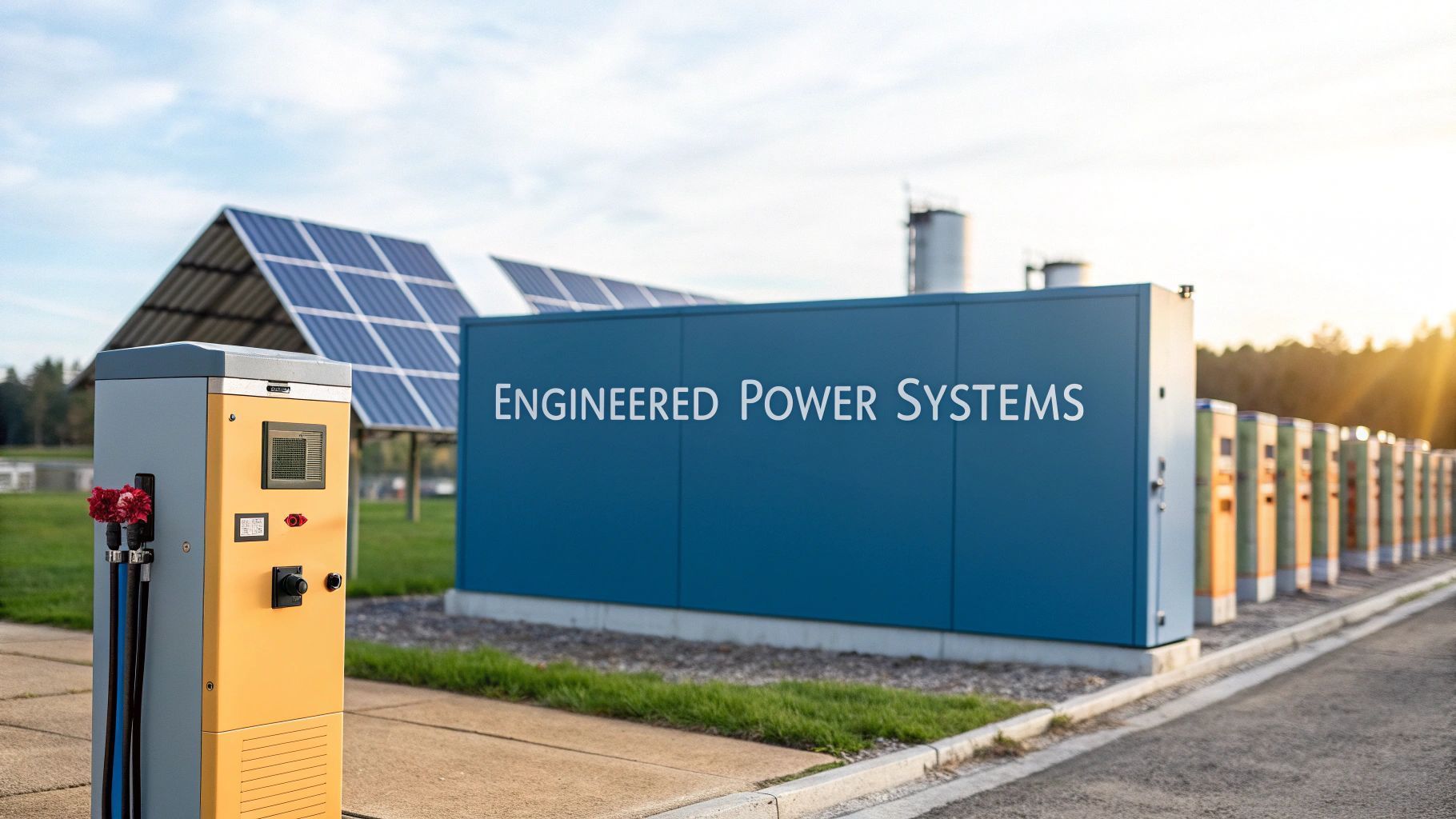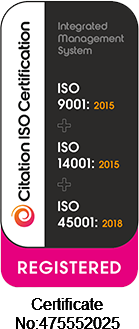Your Guide to the Electric Plug Tanzania Uses
When you are packing for a trip to Tanzania, figuring out how to keep your phone, camera and other gadgets charged is probably high on your list. It is a small detail but a crucial one. Get it wrong and you are left with dead batteries.
Get it right and you are good to go.
Getting to Grips with Tanzanian Power Sockets
So, let's cut to the chase. Tanzania uses two main types of electrical sockets: the Type G (the classic British 3-pin plug) and the older Type D (a 3-round-pin plug) .
Think of having the right travel adapter as having the right key for your hotel room. Without it, you are not getting in. In this case, you are not getting any power.
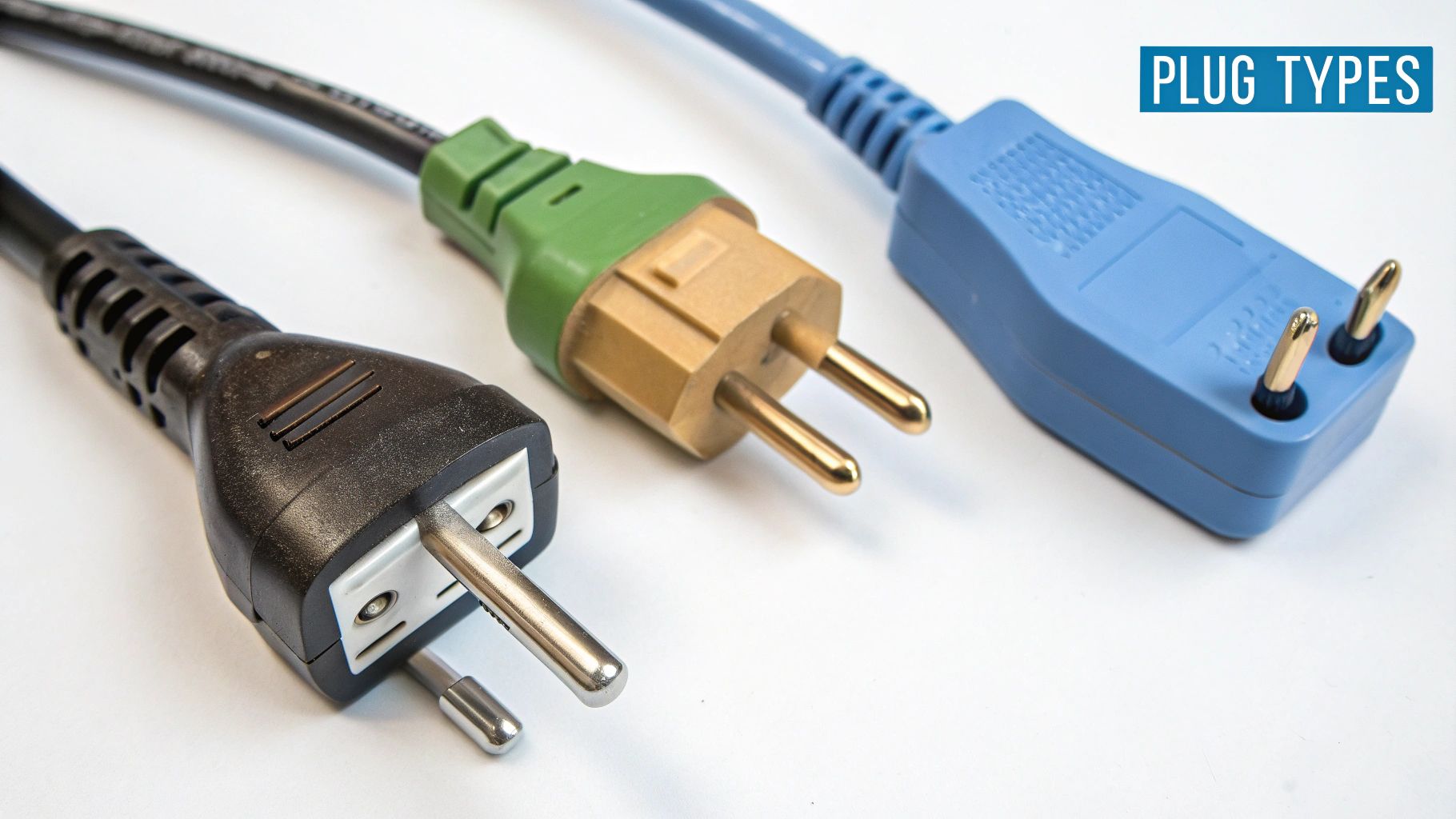
The Type G is the modern standard you will find in most newer buildings and hotels, while the Type D might still pop up in older properties. Because you could run into either, your best bet is to pack a universal adapter that can handle both.
To make things even easier, here is a quick summary of what you need to know about Tanzania's electrical standards.
Tanzania Electrical Standards Quick Guide
This table breaks down the essentials for any traveller. Have a quick look and you will know exactly what to expect.
| Attribute | Specification | Notes for Travellers |
|---|---|---|
| Plug Types | Type G & Type D | Type G is the modern standard. A universal adapter is your safest bet. |
| Voltage | 230V | Check your device for 'INPUT: 100-240V'. If it has this, no voltage converter is needed. |
| Frequency | 50Hz | Standard for the UK, Europe, Australia and much of Asia and Africa. |
| Adapter Needed? | Yes, for most | Unless your devices use a Type G plug, you will need a travel adapter. |
As you can see, it is fairly straightforward. The voltage and frequency are the same as in the UK and much of Europe, so for most modern electronics, all you will need is a simple plug adapter.
Powering the Future of Tanzanian Mobility
While adapters for your personal devices are a simple fix, the conversation around the electric plug in Tanzania is getting much bigger. The country is looking towards a future powered by electric vehicles (EVs) and that brings a whole new set of challenges and opportunities.
The successful adoption of EVs hinges on a robust and accessible charging infrastructure. This includes not only standard charging points but also rapid EV charging solutions that can function effectively even with constrained grid connections.
For Tanzania, this is not just about putting chargers in the ground. It is about building a smart, resilient energy ecosystem. This could mean integrating grid-scale batteries with combined on-site renewables like solar power, especially in a country blessed with so much sunshine.
This approach supports everything from mobile EV charging units for remote safari lodges to distributed energy networks that reduce the strain on the national grid. These are the kinds of solutions, including EV charging and batteries, that will ensure Tanzania’s transport future is both sustainable and reliable.
A Tale of Two Plugs: Type G and Type D
Let's get to grips with the two main types of electric plugs you will find in Tanzania. Knowing the difference between them and a little about their history really explains why a good travel adapter is one of the most important things you will pack.
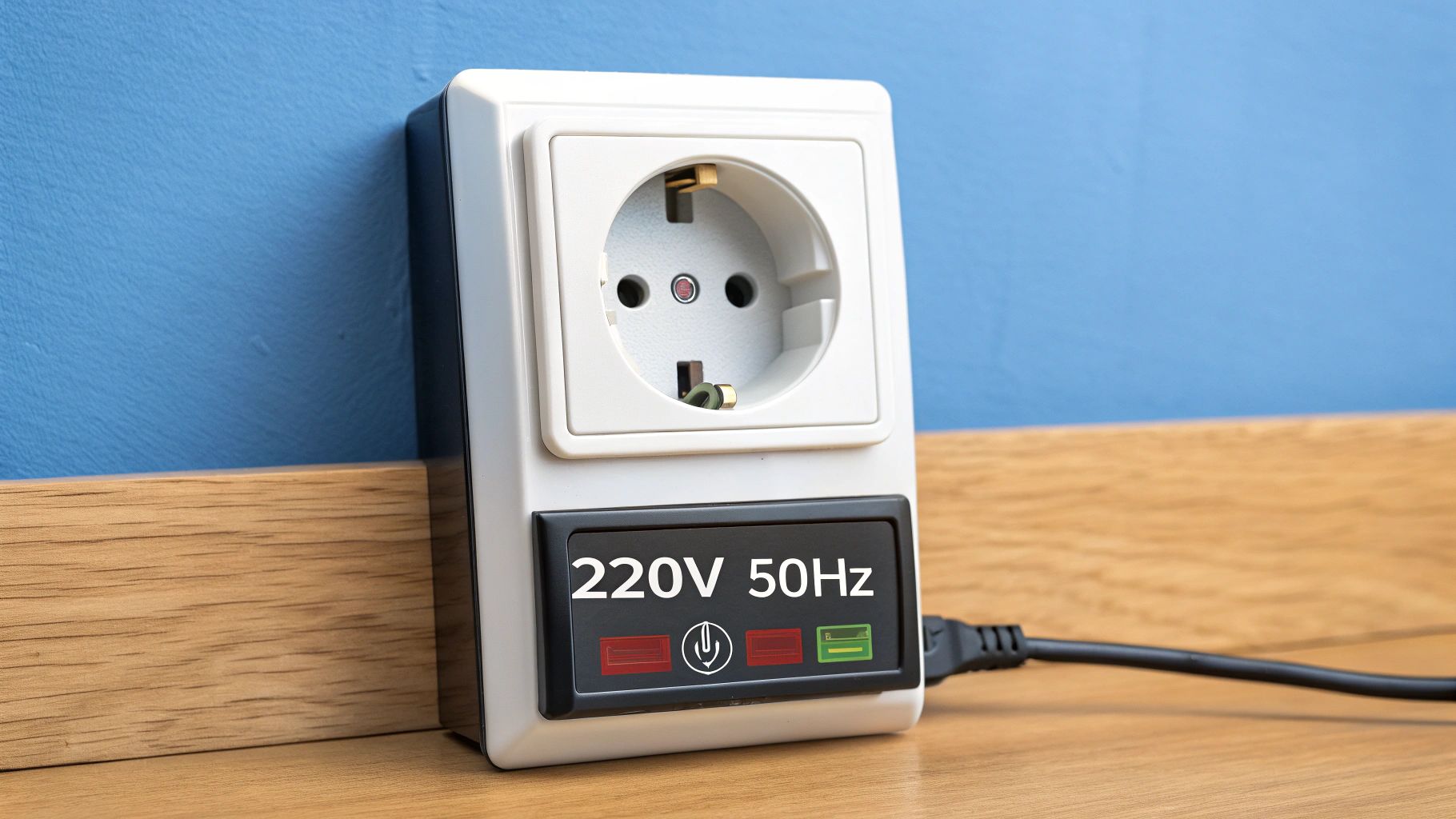
The Type G socket is the modern standard and it is what you should expect to see in most hotels, lodges and newer buildings across the country. It is a direct legacy of Tanzania’s history, being identical to the chunky three-pin plug used all over the United Kingdom.
The Modern Standard: Type G
You can’t miss the Type G plug. It is the one with three hefty, rectangular pins set in a triangle. It is famous for being incredibly safe, with features that were genuinely groundbreaking when first designed.
- Internal Shutters: The holes for the live and neutral connections are protected by shutters. They only open when the longer top earth pin is pushed in first, making it much harder for anything (or anyone) to accidentally touch live parts.
- Fused Plugs: Every single Type G plug has its own fuse inside. This adds another layer of protection, safeguarding your device's cable from unexpected power surges.
This design has its roots in post-WWII Britain. The official BS 1363 standard was brought in back in 1944 to create a single, safe and reliable system, replacing a messy mix of older, less secure plugs. This intense focus on safety is why it is still the standard in so many countries today. To get the full picture, you can explore more about the history of the British three-pin plug and see just how influential it became.
The Older System: Type D
Now for the Type D socket. This is an older system and while it is being phased out, you might still bump into one in a historic building or a more remote guesthouse. It is becoming much less common but they are still out there.
This plug has three round pins in a triangular layout. It gets the job done but it is a much simpler design that lacks the advanced safety features like shutters or internal fuses that are built into every Type G plug. Its presence is really just a reminder of older electrical infrastructure.
The bottom line? Because you could run into either plug type on your trip, a versatile, high-quality universal adapter is the only sensible choice. It means you are ready for anything, whether you are plugging in at a modern city hotel or a charming old guesthouse off the beaten track.
Navigating Voltage and Frequency in Tanzania
Knowing what your plug looks like is only half the story. The real power lies in understanding the voltage and frequency flowing through the socket, which is critical for keeping your devices safe and working as they should.
Tanzania’s electrical system runs at 230 volts (V) and 50 hertz (Hz) . This is great news for some but a crucial warning for others.
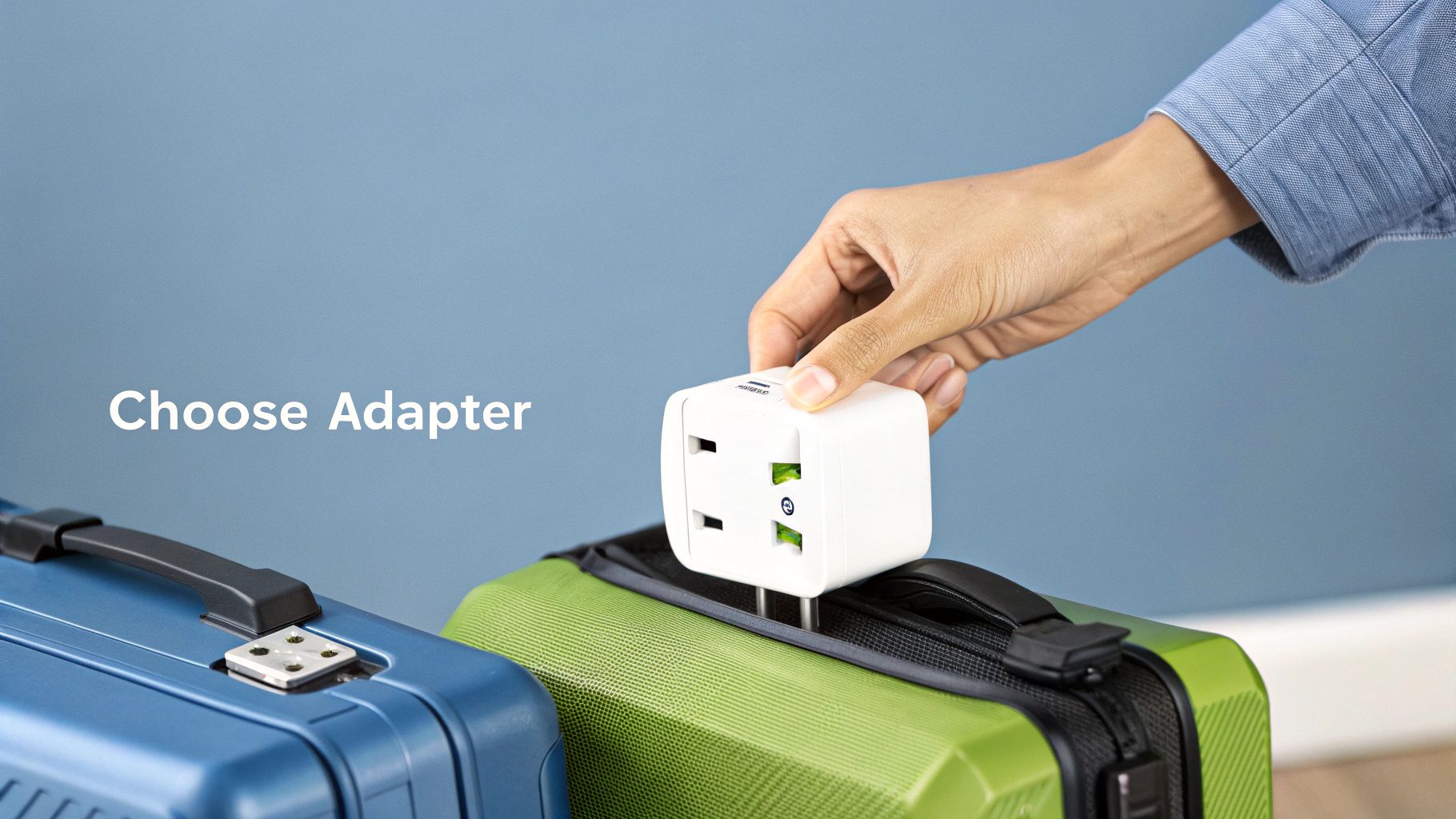
If you are coming from the UK, Europe, Australia or most of Asia and Africa, your electronics are already built for this standard. You will just need a simple plug adapter to fit the wall socket and you are good to go.
But for visitors from North America and other places that use a 110-120V standard, this voltage difference is a big deal. Plugging a 120V device directly into a 230V socket is a recipe for disaster—it can fry your electronics in an instant.
Checking Your Device for Compatibility
Before you even think about plugging anything in, take a moment to check your device's power label. It is usually on the charger itself, often in tiny print on the power brick.
Look for the magic words: 'INPUT: 100-240V, 50/60Hz' . If your device has this label, congratulations, it is 'dual-voltage'. It can handle Tanzania's electricity without a problem. All you will need is that plug adapter we mentioned.
If your device is only rated for 110V or 120V, you absolutely need a step-down voltage converter . This clever bit of kit goes between the wall socket and your plug, taking the powerful 230V current and reducing it to a safe level for your electronics.
It is a completely different situation from standards in other countries. To see just how much these specifications can vary globally, you can check out our guide to voltage for Mexico and EV charging. Forgetting a converter in Tanzania is not an option—it is the only way to avoid permanent damage to your single-voltage devices.
How to Choose the Right Travel Adapter
With two different socket types potentially in use across Tanzania, picking the right travel adapter is one of those small details that makes for a smooth, stress-free trip. While you will find a dedicated Type G adapter works in most modern hotels and new builds, a high-quality universal adapter is easily the smartest investment for any traveller.
This flexibility is what really counts. A universal adapter has you covered for both the common Type G and the less frequent Type D sockets, meaning you can plug in and power up wherever you find yourself. It is also a future-proof purchase, ready for your next adventure to a different part of the world.
Comparing Your Options
Adapter models can be as simple as a single-plug converter or as advanced as a multi-port unit designed for the tech-heavy traveller. Think about how many devices you will be charging at once. A universal adapter with built-in USB ports can be a real game-changer, letting you charge your phone, camera and laptop from a single wall socket. No more juggling plugs.
When you are deciding, put safety first. Always look for adapters with reputable safety certifications, such as BS 8546 . This mark confirms the product has been properly tested to rigorous British safety standards, giving you peace of mind that it is well-made and will not damage your valuable electronics.
To give you an idea of what to expect, here is a look at the average price for adapters from different retailers in Tanzania.
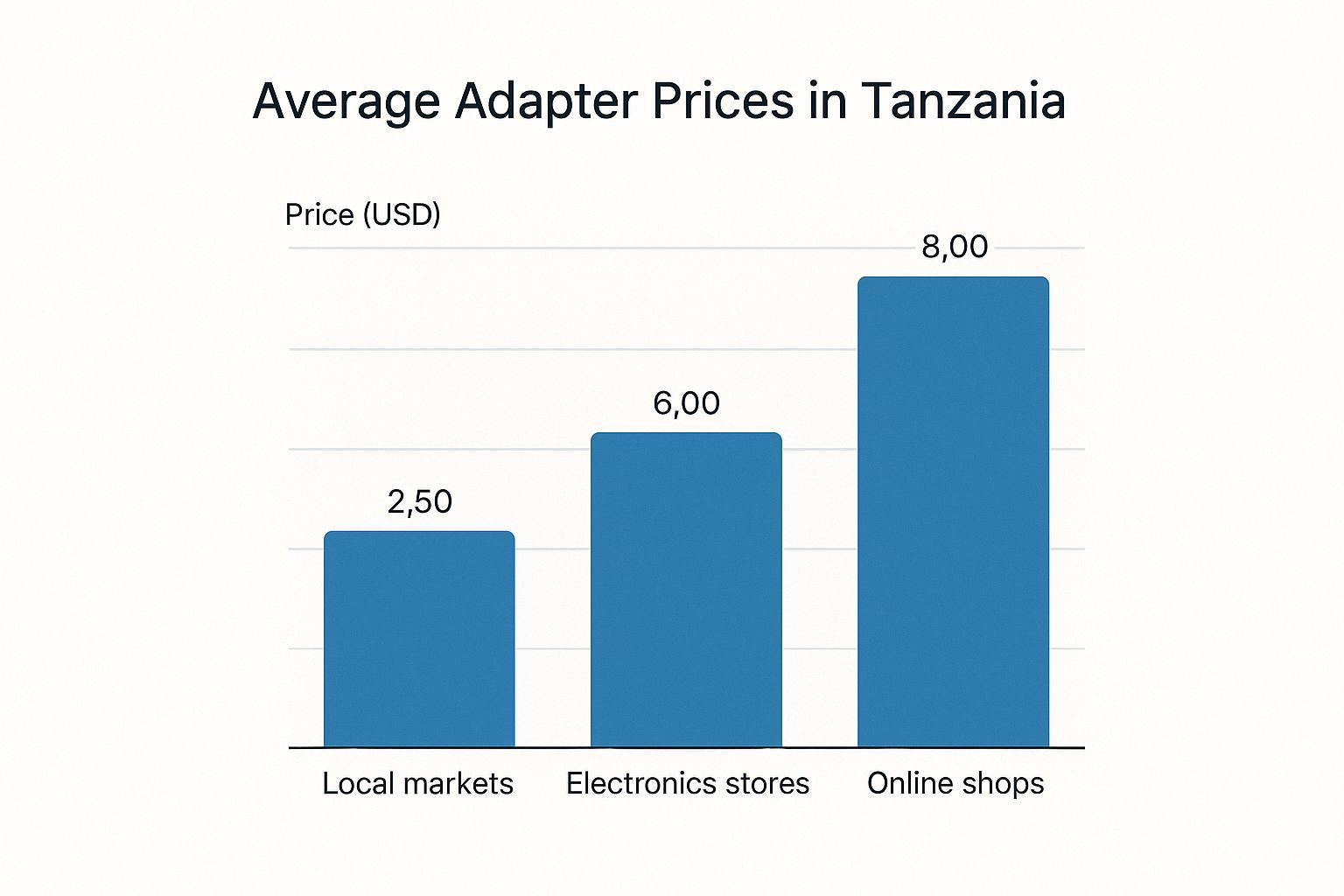
As you can see, buying your adapter online before you travel is often the most reliable and budget-friendly choice.
To help you weigh your options, this table breaks down the main types of travel adapters you might consider.
Comparison of Travel Adapter Types for Tanzania
| Adapter Type | Pros | Cons |
|---|---|---|
| Single Type G Adapter | Compact, lightweight and usually the cheapest option. Perfect if you are certain you will only encounter Type G sockets. | Inflexible. It will be useless if you come across a Type D socket, which is still possible in older buildings. |
| Universal Adapter | Highly versatile, covering both Type G and Type D sockets, plus many others for future travel. Often includes USB ports. | Can be bulkier and more expensive than single adapters. The moving parts on cheaper models can sometimes be less durable. |
| Universal Adapter with Converter | An all-in-one solution that not only adapts the plug shape but also converts voltage for devices that need it. | Often the most expensive and heaviest option. Unnecessary for most modern electronics, which are dual-voltage. |
Ultimately, a good-quality universal adapter offers the best balance of convenience and preparedness for a trip to Tanzania.
Advanced Power Solutions
Beyond just charging a phone, the principles of reliable power apply on a much bigger scale. For businesses and entire communities, managing electricity from a constrained grid is a major challenge, especially when you factor in the huge demands of things like rapid EV charging .
This is where integrated systems become so important. By combining on-site renewables like solar panels with grid-scale batteries and smart energy management software, it is possible to create a resilient, independent power source. This model not only supports mobile EV charging in remote locations but also helps build distributed energy networks that strengthen the whole electrical infrastructure. It is an approach that ensures power—whether for a smartphone or an electric bus—is always there when you need it.
Practical Power Tips for Your Tanzania Trip
Beyond just having the right adapter, you need to be prepared for the realities of the power grid when you land in Tanzania. Power cuts, known locally as ‘load shedding’, are a fact of life, especially once you venture beyond major cities and tourist centres like Dar es Salaam.
This is why a portable power bank is not just a nice-to-have; it is an essential piece of your travel kit. Think of it as your personal power reserve, keeping your phone, camera and other small gadgets topped up during unexpected outages. You will not have to worry about missing that perfect safari shot.
Safeguarding Your Electronics
It is not just the lack of power you need to think about but its return. When the electricity comes back on after a cut, it can create a power surge. These sudden voltage spikes are a real danger to sensitive electronics and can permanently fry valuable gear like laptops and cameras.
A travel adapter with built-in surge protection is your best line of defence. This simple feature acts as a shield, giving you the peace of mind that your expensive equipment is safe from the unpredictable grid.
While you are planning how to keep your devices charged, it is also worth looking into broader tips for staying digitally connected abroad , as managing your power is a huge part of that.
These practical steps are crucial for any traveller but the challenges of an inconsistent grid point to a much bigger picture for Tanzania. Ensuring a stable power supply for everyone—from individual households to the growing demand for EV charging—is a national priority.
This is where innovative approaches come in, especially when it comes to EV charging from constrained grid connections . By pairing combined on-site renewables with large-scale EV charging and batteries, it is possible to build resilient, localised energy systems that are not dependent on a fragile national grid. This model not only solves day-to-day reliability issues but also lays the groundwork for future infrastructure, like supporting mobile EV charging stations in off-grid safari lodges and tourist spots.
Your Questions on Tanzanian Power Sockets Answered
Getting the power situation right is one of those small details that makes a huge difference to any trip. To make sure you are fully prepared, here are some quick answers to the most common questions we get about using your electronics in Tanzania.
Do I Need a Voltage Converter for Tanzania?
It is unlikely. Most modern gadgets like phone chargers, laptops and cameras are built for global travel and are dual-voltage. Take a look at the power label on your device—if you see 'INPUT: 100-240V' , you are good to go with Tanzania’s 230V system. All you will need is a simple plug adapter.
The exception is for single-voltage devices from countries that use 110-120V , like the US or Canada. Things like older hairdryers or curling tongs will need what is called a step-down voltage converter. Without one, you risk damaging your device.
Can I Use a European Plug in Tanzania?
Unfortunately not. A standard two-pin European plug (Type C or F) just will not fit. Tanzania almost exclusively uses the British-style Type G socket, which has three rectangular pins. You might occasionally stumble across the older Type D with three round pins but the Type G is the one to plan for.
A universal adapter is your best bet. It is a practical, all-in-one solution that covers both potential socket types and sets you up for future travel to other parts of the world.
Should I Buy a Travel Adapter Before I Go?
Yes, absolutely. While you might be able to find an adapter in a big city like Dar es Salaam, tracking one down can be a hassle and the quality can be a bit hit-or-miss. Buying a certified, high-quality adapter before you leave means you can charge your devices safely the moment you arrive. No stress, no searching.
For more detailed answers on power solutions, from personal travel to industrial applications, feel free to review some of our most frequently asked questions.
This same idea of planning ahead is crucial for Tanzania’s national energy strategy, too. Meeting the demands of rapid EV charging when grid connections are already stretched requires smart thinking. By pairing grid-scale batteries with on-site renewables, Tanzania can build a powerful distributed energy network. It is an approach that not only supports innovations like mobile EV charging but also creates a more resilient power infrastructure for everyone.
At ZPN Energy , we specialise in creating these integrated energy solutions. From rapid EV charging infrastructure to advanced battery storage systems, we provide the technology needed to build a reliable and sustainable power future. Discover our energy management solutions at https://www.zpnenergy.com.


